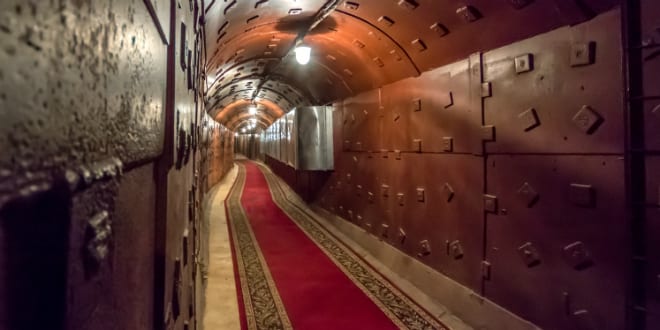Your cart is currently empty!

Israeli Govt Enters Secret Nuclear Command Bunker to Fight Coronavirus
Prime Minister Benjamin Netanyahu announced that future cabinet meetings will be held in an underground bunker in the Jerusalem hills that was built more than ten years ago to house the government in case of a nuclear attack from Iran or a massive missile barrage from Lebanon.
Called the National Management Centre, the hardened underground complex includes living quarters and command facilities. Built in the foothills to the west of the capital, the underground complex has direct access from the government buildings in Jerusalem.
“This [bunker] is another tool for managing, controlling, oversight and tracking” the coronavirus, an anonymous Israeli official told Reuters. “We understand that this crisis will accompany us for an extended period of time yet.”
Some Israeli officials tried to joke off the move. Defense Minister Naftali Bennett told an Israel Radio reporter during a news conference that the bunker “is not so relevant [to the crisis]. We are not under a missile attack that would require us to be underground.”
Energy Minister Yuval Steinitz said in an interview with Tel Aviv radio station 102 FM that the bunker had limited usefulness in the current crisis as “it protects from bombs, but not from microbes.”
Weekly cabinet meetings were held in the underground bunkers in 2018 when Israel accused Iran of firing rockets from Syria into the Israeli Golan Heights. Israel struck back with its heaviest airstrikes in Syria since the start of the Syrian civil war in 2011. At the time, it was believed that moving to the bunker command center indicated the Israeli government’s intention to escalate their response to the Iranian attacks.
Construction on the $240 million underground bunker began in 2007. Designed to withstand a nuclear bomb, it can house the Prime Minister’s Office, military commands centers and the necessary civil authorities to run the country. A guarded tunnel leading to the complex can allow two trucks to travel side by side.
Source: Israel in the News
